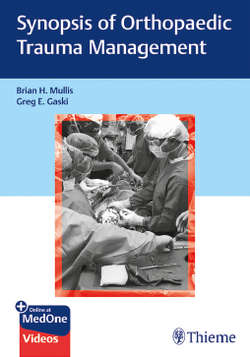Читать книгу Synopsis of Orthopaedic Trauma Management - Brian H. Mullis - Страница 49
На сайте Литреса книга снята с продажи.
IV. Basic Statistical Interpretation
ОглавлениеA. Definitions
1. Null hypothesis:
a. According to this, in a population, two interventions (or an intervention and a nonintervention) will result in no difference in outcomes.
b. Often presented in the negative (i.e., an intervention being studied will NOT affect the outcome).
2. Alternative hypothesis:
a. In a population, an intervention will result in a difference in outcome.
b. Often presented in the positive (i.e., an intervention being studied WILL affect the outcome).
3. P-value:
a. A probability that the null hypothesis will be accepted (and the alternative hypothesis will be rejected).
b. Often set at < 0.05 for statistical significance (i.e., there is < 5% chance that the null hypothesis will be accepted).
4. Power:
a. A trial should be big enough to detect a statistically significant effect, if it exists, and to be reasonably sure that no effect exists if none detected by the trial.
b. Calculation based upon data in existence (such as previously published) or based upon assumptions.
c. Authors need to determine a minimum clinically important difference (MCID) in order to perform this calculation.
d. Underpowered studies may not be clinically relevant, even if the p-values indicate statistical significance (a larger sample size may cause a change in the results).
5. Fragile p-value:
a. Beware when one group in a comparison study has zero events.
i. Were there no events because there never will be events, or were there no events because the sample size was not big enough?
ii. The p-value could change substantially if one event occurs.
b. Beware when a small sample size results in outcomes that are marginally different between the two cohorts and yet result in a p-value that is significant (e.g., 10 coin flips give 4 heads and 6 tails; it is unlikely that tails are the more likely result, and instead 100 flips might demonstrate that the results are closer to 50:50).
6. Confidence interval (CI):
a. Generally provided as 95% CI—there is a 95% chance that a repeat of a study will demonstrate differences or similarities within the range given. For example, medication A reduces systolic blood pressure by 12 points and medication B reduces systolic blood pressure by 20 points. The average reduction is 8 points, with a 95% CI of 3–12. So, 95% of trials that are duplicates of this study should yield a reduction in systolic blood pressure of 3 to 12 points.
b. Larger trials result in smaller CIs.
7. Diagnostic parameters (▶Fig. 5.2):
a. Sensitivity—how good is the test at picking up a condition (true positives)?
b. Specificity—how good is the test at excluding those without a condition (true negatives)?
c. Positive predictive value—if a test reveals that a condition exists, how likely is it that the condition exists (probability)?
d. Negative predictive value—if a test reveals that the condition does not exist, how likely is it that the condition does not exist (probability)?
B. Tests used routinely in orthopaedic trauma manuscripts
1. Chi-square (ξ2) test—tests the likelihood that two separate samples are different:
a. Comparison of categorical variables (e.g., yes/no; infection present or absent).
b. Fisher’s exact test similarly compares categorical variables and is typically used when sample sizes are small; chi-square test is used when sample sizes are large.
Fig. 5.2 Example of a sensitivity and specificity table evaluating a new test (culture swab) for diagnosis of a disease (tibia infection).
2. One-sample (paired) t test or Wilcoxon rank sum test—tests the likelihood that two different measurements in the same sample are different. Comparison of continuous variables.
3. Two-sample (unpaired) t test or Mann–Whitney U test—tests the likelihood that two separate samples from the same population are different.
4. Analysis of variance (ANOVA)—tests the likelihood that three or more sets of observations made on a single sample are different.
5. Pearson’s or Spearman’s test—if a straight-line association exists between two continuous variables, what is the strength of that association?
6. Linear regression—describes a numerical relationship between two variables.
7. Multiple regression—describes a numerical relationship between one dependent variable and multiple (at least two) other covariates.
